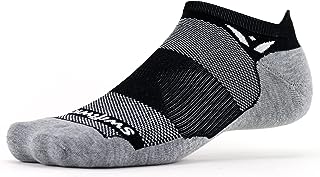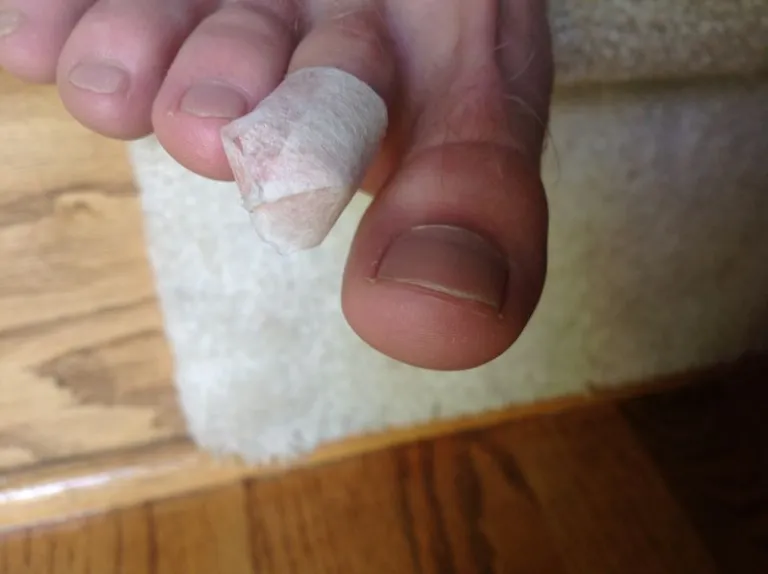Beyond running shoes, a good pair of running socks is the most important piece of running gear. For your comfort and performance on the run. Running in the wrong pair of socks can lead to painful rubbing, cause blisters and chafing. Then turn an otherwise fabulous run into a miserable experience. And wearing quality running socks can make the difference between a disastrous race and a personal best.
When shopping for running socks, the most important factor is material. Stay away from cotton socks, since the fabric absorbs water and causes blisters. Look for socks that are made of merino wool, a natural odor-resistant and moisture-wicking material. A mix of synthetic fabrics, such as nylon, polyester, and spandex.
The perfect running socks for you depends on when and how you’ll be using them. While some socks are suitable for year-round running. You may want a lighter, low-cut sock for hot weather running and a thicker, higher sock for winter.
Trail runners may want socks that cover the ankle for additional protection. To prevent pebbles from getting in their shoes. No-show socks are a favorite among runners. But you should look for ones that have a tab at the back to keep them from falling. To prevent your shoes from rubbing against your skin.
Blisters are a huge concern among runners. So you need socks with good wicking capability, no seams, and excellent ventilation to help prevent them. The right fit is also crucial because you don’t want to be tugging at socks that are too small. Dealing with bruised toenails and blisters caused by ill-fitting socks
When shopping for running shoes, make sure you try on shoes with the socks you’re going to be running in. Because some socks will require you to go up a half-size.
Check out our list of the best running socks that will keep your feet dry, comfortable, and blister-free.
What to Look for in Running Socks
Moisture-wicking technology: Look for moisture-wicking socks made with fabrics such as polyester or merino wool. Those materials will pull sweat away from your skin and quickly evaporate it. By effectively managing moisture, these socks help prevent your feet from becoming wet and clammy. This not only enhances your overall comfort. But also reduces the risk of blisters and other foot-related issues caused by excess moisture.
Fit: Investing in socks that fit snugly, but not too tight. Will help prevent friction and irritation. Allowing you to focus on your running form and stride. Take the time to measure your feet and refer to size charts. Provided by sock manufacturers to ensure you’re selecting the correct size.
Cushioning: Light cushioning in running socks is designed to absorb impact. They reduce the strain on your feet, helping to prevent discomfort and fatigue. By providing a soft and supportive layer between your feet and the ground. They help to cushion each step and reduce the risk of foot and leg pain. This added layer of comfort can be particularly beneficial during long runs or when running on uneven surfaces.
Arch support: Good running socks also have light arch support, to help distribute weight evenly across your feet. Reducing strain on the arches and providing stability. Whether you have high arches or flat feet. Having proper arch support can help prevent common foot issues such as plantar fasciitis and shin splints.
Durability: Look for socks that are made with high-quality materials. Expertly manufactured, so they are built to withstand the rigors of regular use and repeated washing. Socks with reinforced toes and heels are built to resist wear and tear in the areas that are prone to the most stress.
Do running socks make a difference?
Yes, wearing socks that are designed specifically for running can keep your feet comfortable and blister-free. They’re designed with materials that wick away sweat and dry quickly. Helping to prevent blisters and keeping your feet from getting cold when running in the winter. They also have more compression and padding than most regular socks, which will increase your overall comfort.
Should I wear compression socks for running?
Compression socks apply gentle pressure to your feet and lower legs. Which can aid in circulation and reduce muscle fatigue during runs. This compression works by increasing the blood flow back to the heart, helping oxygenate your muscles and potentially improving performance. It’s crucial to find the right level of compression for your needs. While some runners prefer a higher level of compression, others may find it uncomfortable or overly restrictive. The key is to experiment with different compression levels to determine what works best for you and your running routine.
Why are cotton socks bad for running?
Cotton absorbs moisture and dries slowly, so once your feet start sweating or get wet from rain, they’ll stay wet. Wearing cotton socks on a run can lead to soggy feet, chafing, and foot blisters.




